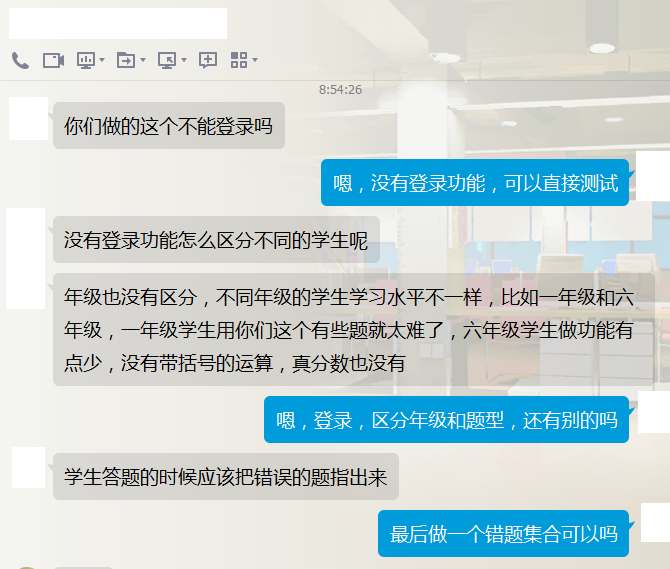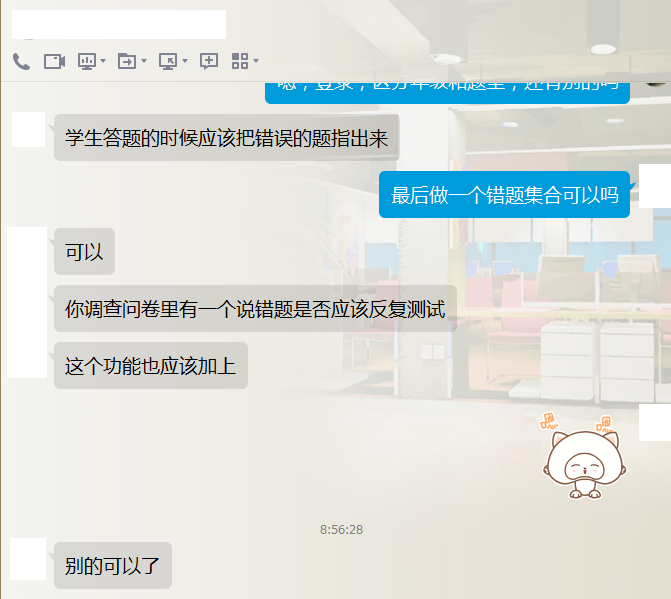2. Questionnaire design ( https://www.wjx.cn/m/22531831.aspx )
Using the Questionnaire Star platform, 28 questions were listed to conduct a questionnaire survey on teachers, parents and primary school students. Since
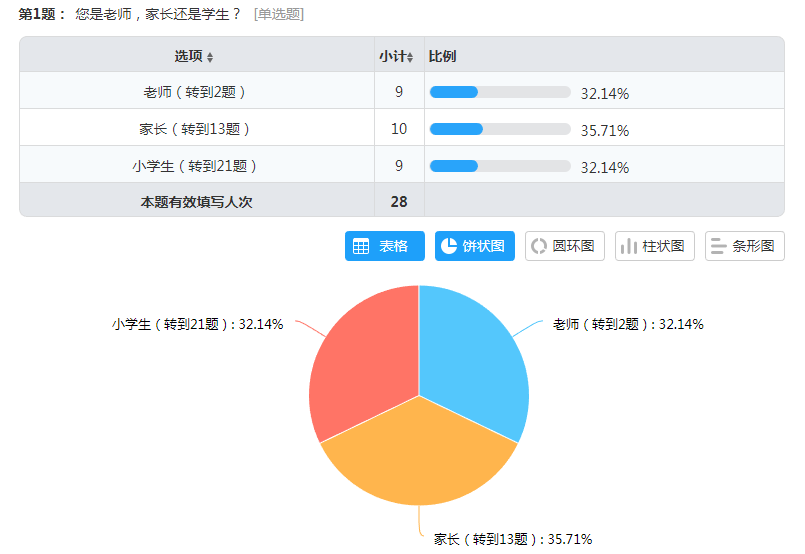
(1) teacher
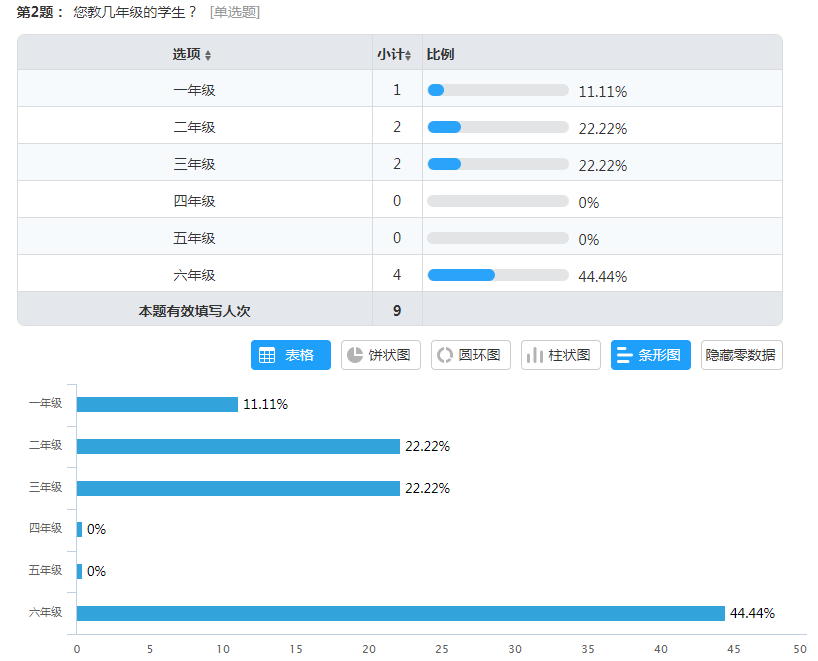
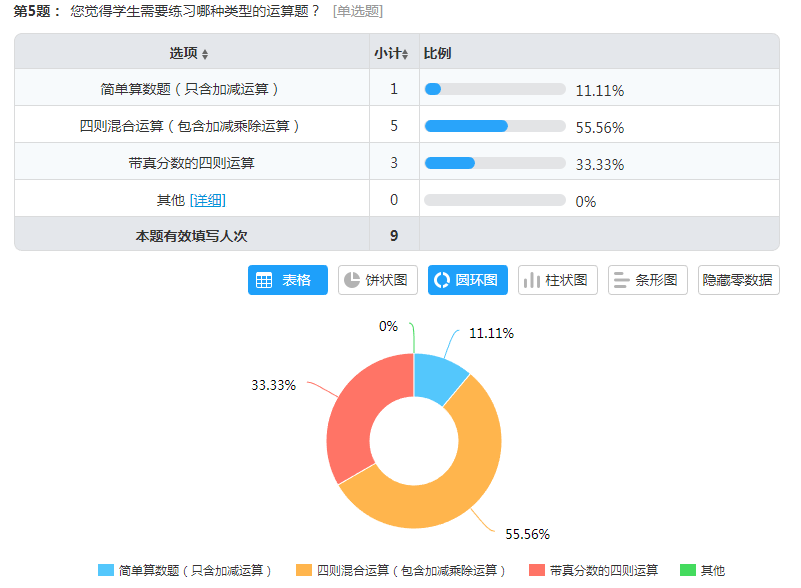



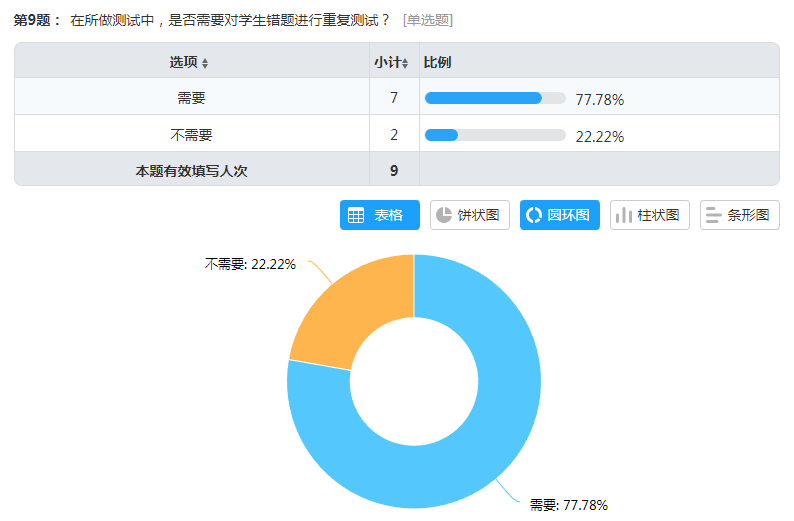
(2) Parents
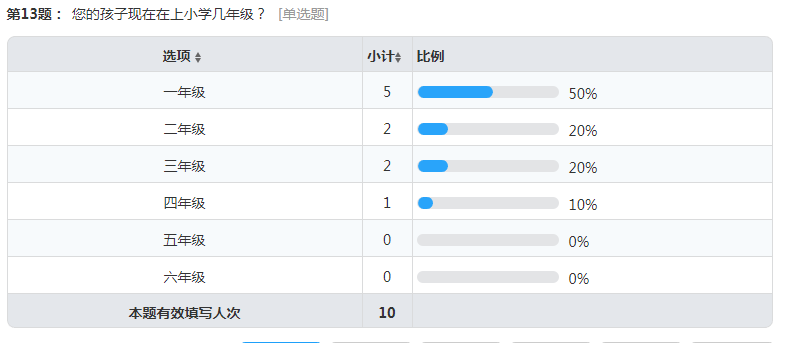
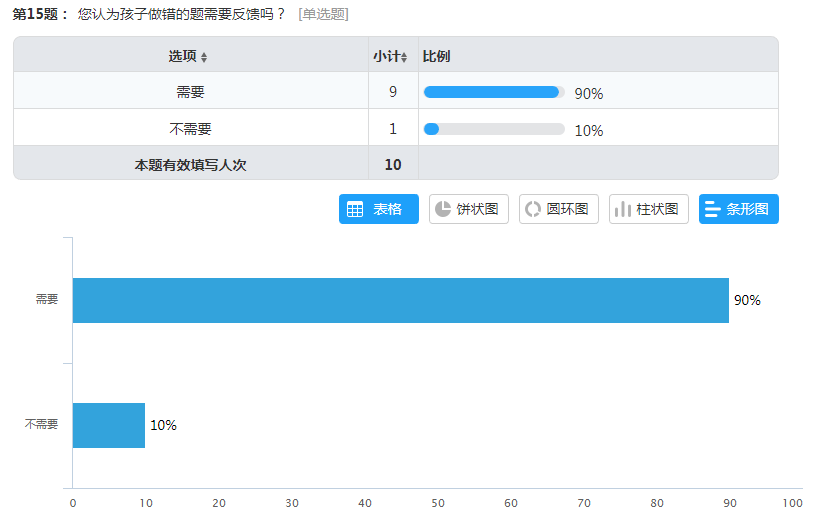

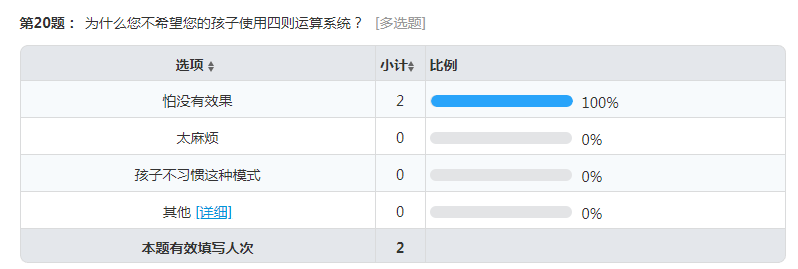
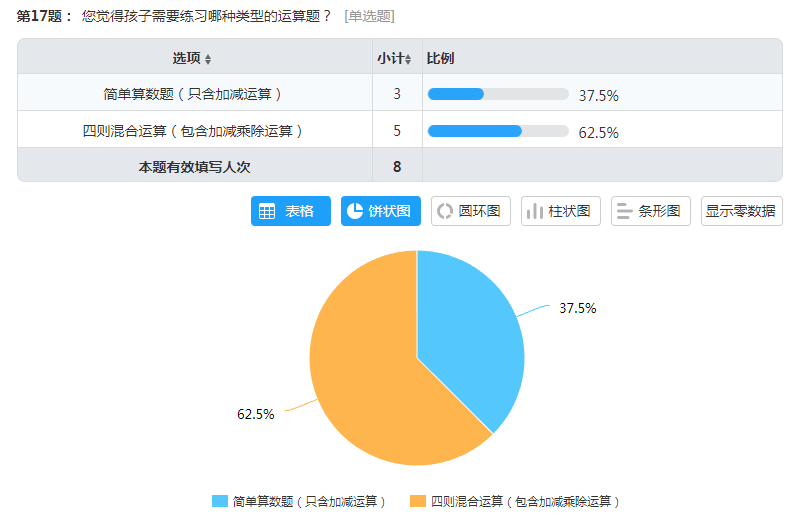
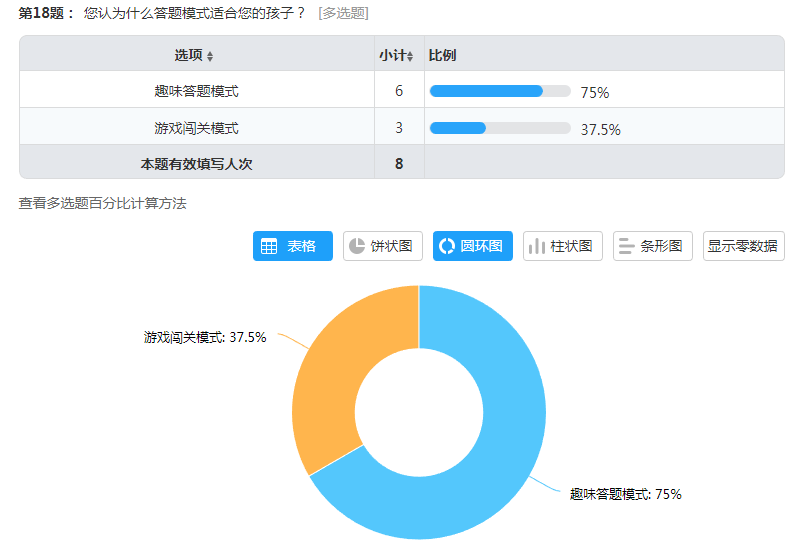
(3) Elementary school students
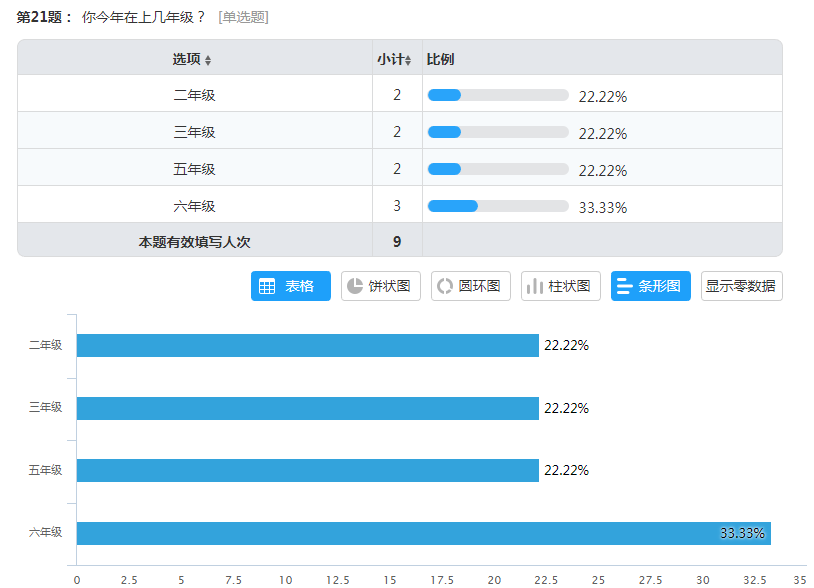


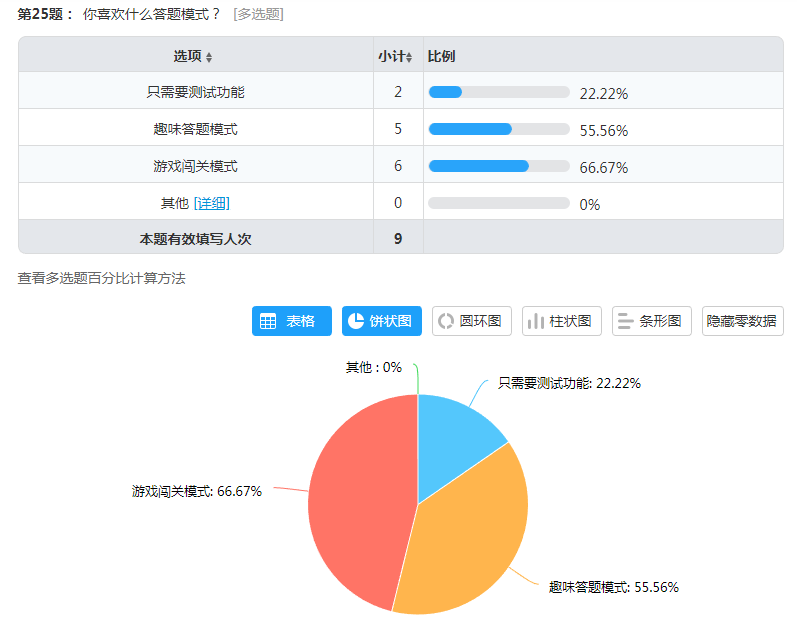


3. Questionnaire analysis
Through the analysis of the above questionnaires, we use different graphs to more intuitively express the thoughts of the respondents. After the summary, the following aspects need to be improved:
(1) Registration and login functions: In order to distinguish different students, the registration and login functions are necessary;
(2) Multiple-choice question type: Due to the different learning progress of primary school students in grades 1 to 6, it is necessary to distinguish different grades for design, and set the question type as integer addition and subtraction within 100, simple addition, subtraction, multiplication and division, and addition with brackets. Subtraction, multiplication and division operations, mixed operations of addition, subtraction, multiplication and division with true fractions, etc., are convenient for students of different grades. In addition, the frequency of training and the number of answers in each round are also very important. Different training frequencies and the number of answers in each round are set for students of different grades.
(3) Display of wrong questions: Our software model currently does not have the function of displaying wrong questions, and users do not like it when using it. Therefore, it is necessary to display the wrong questions when the score is finally displayed to help students learn better.
(4) Repeated test: Users can test the questions they made wrong again, and they can realize their own problems for the questions that are careless and wrong.
(5) Answering mode: Since children are more playful, the boring answering mode is not very efficient. It is necessary to set up interesting answering and game answering modes.
(6) Appearance design: primary school students are the end users of our software, so the design of the interface is very important, and using the background that children like can improve their interest in using it.
Task 2: Use an appropriate modeling method to describe the requirements obtained in Task 1, and ask survey users to review.
Functional design diagram:
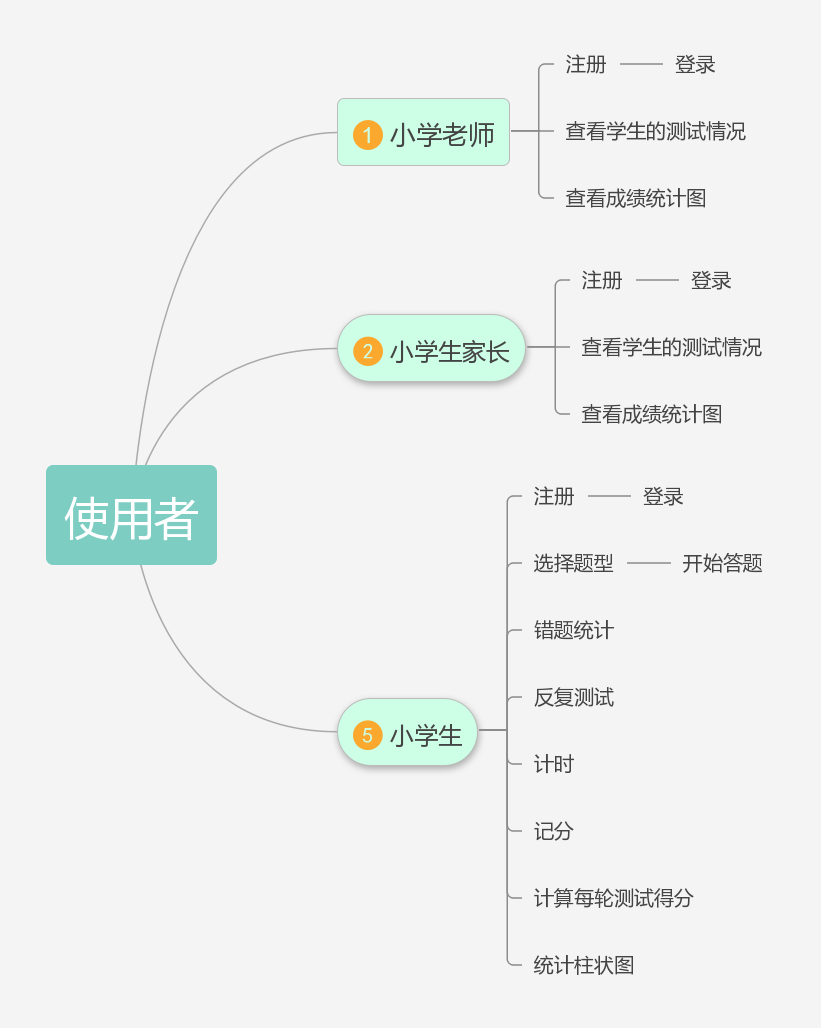
Task 3: "Explanation of Software Requirements for Elementary School Students' Four Operation Exercises"
2. NABCD summary
(1). N (Need demand)
When teachers need to give questions for students in the process of work, the system is needed to save teachers’ work time and improve their work efficiency; parents need to use this system to allow children to carry out development training when they are tutoring at home and supervising children to complete their homework; Learning, you need to improve your four arithmetic ability through this system. Contemporary parents pay more and more attention to the education of primary school students, and education must start with children. Therefore, many parents are very worried about their children's learning. For elementary school students, parents often give some calculation problems, or buy workbooks for their children to do. After finishing the work, parents and teachers have to check them, which undoubtedly adds a layer of burden to parents who are tired day and night. Therefore, a software that can automatically generate questions, score, time, and judge right or wrong is very helpful.
(2). A (Approach method)
We have investigated different types of users separately, modified the software according to user needs, improved the functions of the software, and made the software suitable for all kinds of users, so our software requirements specification is more realistic.
(3). B (Benefit benefits)
The four arithmetic practice software for primary school can save work time for teachers and improve efficiency; save worry and effort for parents; the set fun answering and game mode can improve the interest of primary school students and achieve the purpose of improving primary school students' computing ability.
(4). C (Competitors competition)
At present, the same type of software already exists on the market with complete functions, because the system is written by us, the interface is not too beautiful, and the function implementation is not particularly perfect. When entering the market, we not only have to compete with the same type of system, but also with the traditional Competitive paper four arithmetic practice questions.
(5). D (Delivery)
First of all, we will let friends and relatives use it, look at the feedback, and improve the system according to the opinions. Finally, we will use it for free online to see the usage, and finally promote the use on a large scale.

